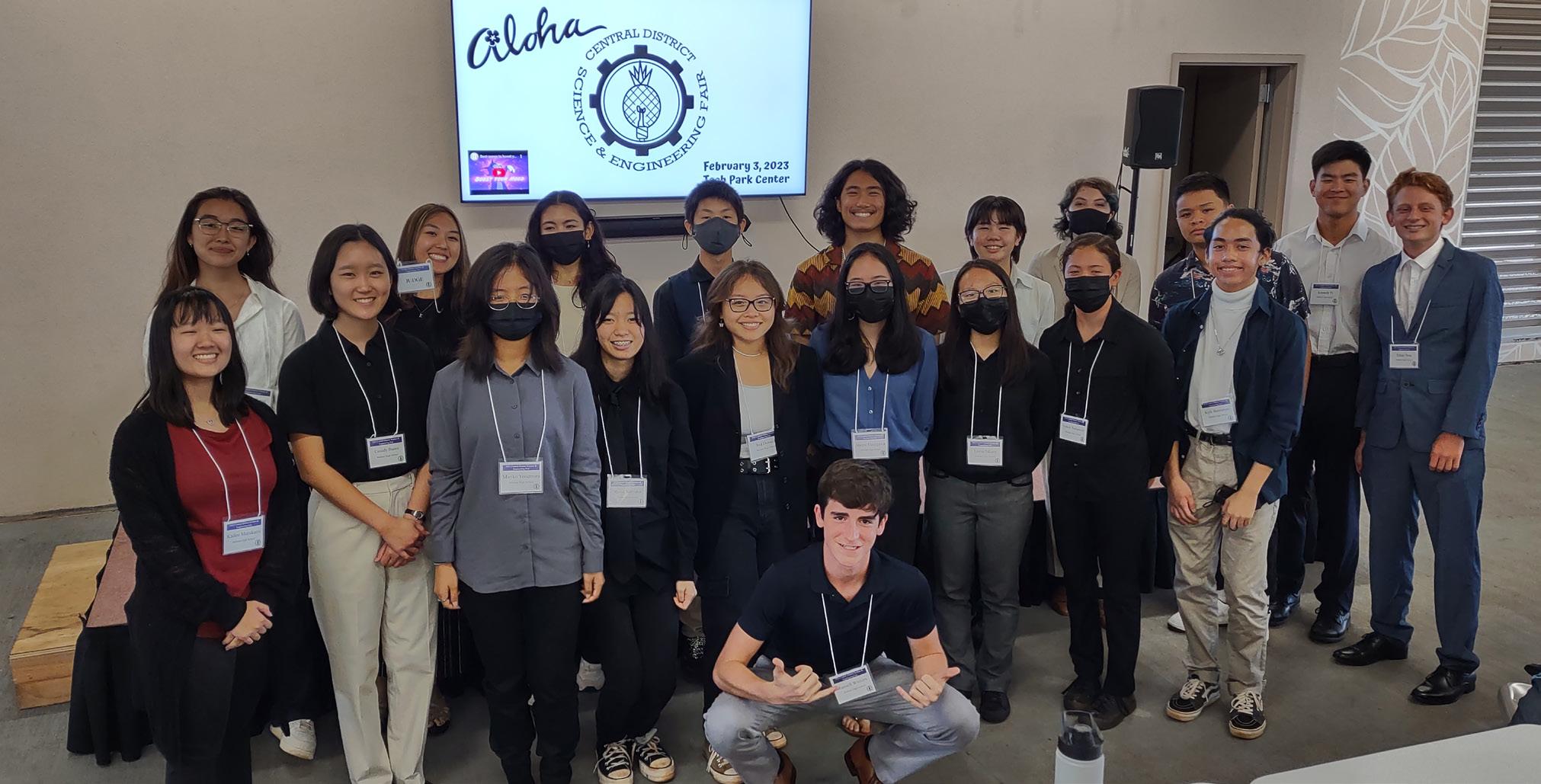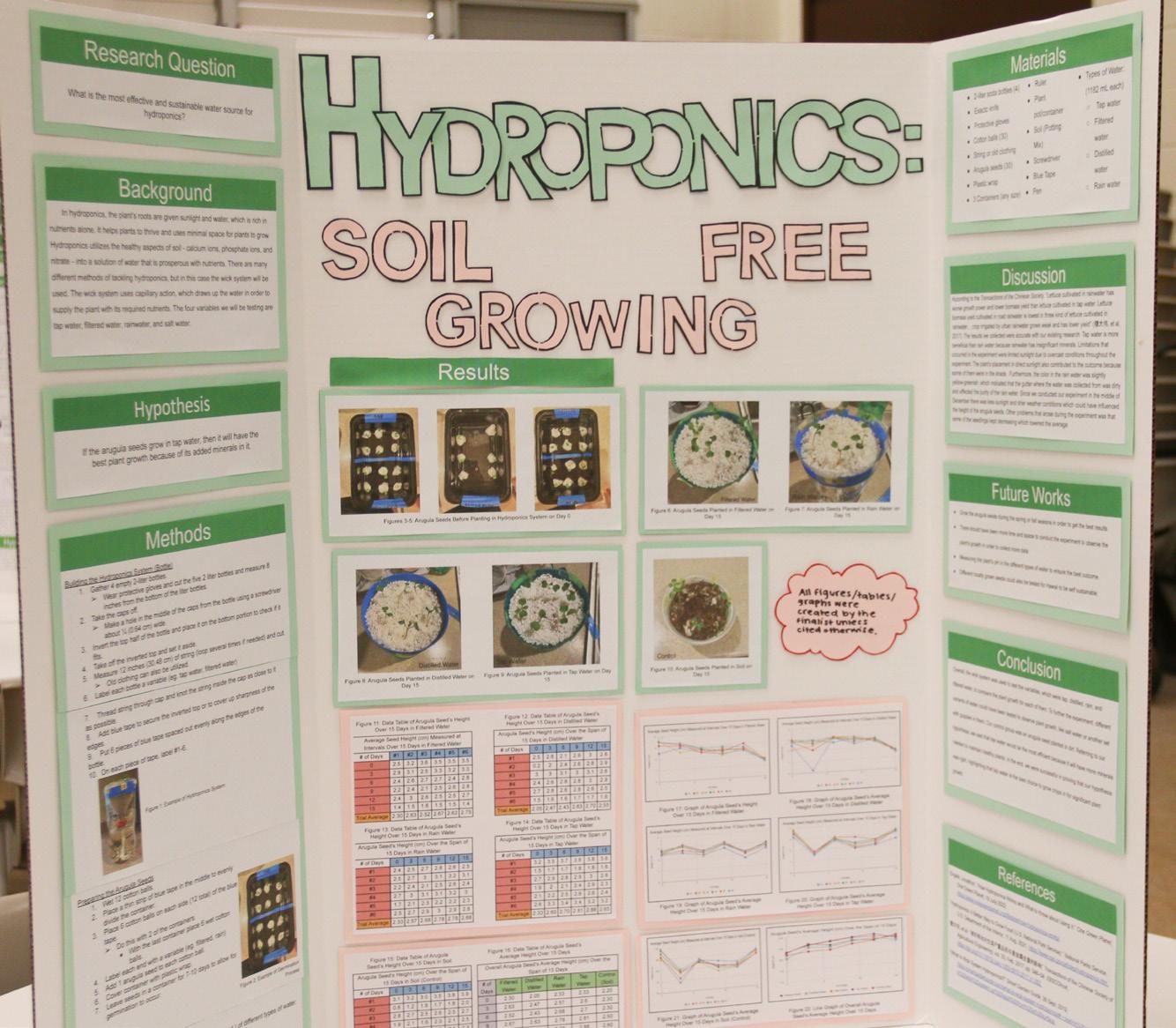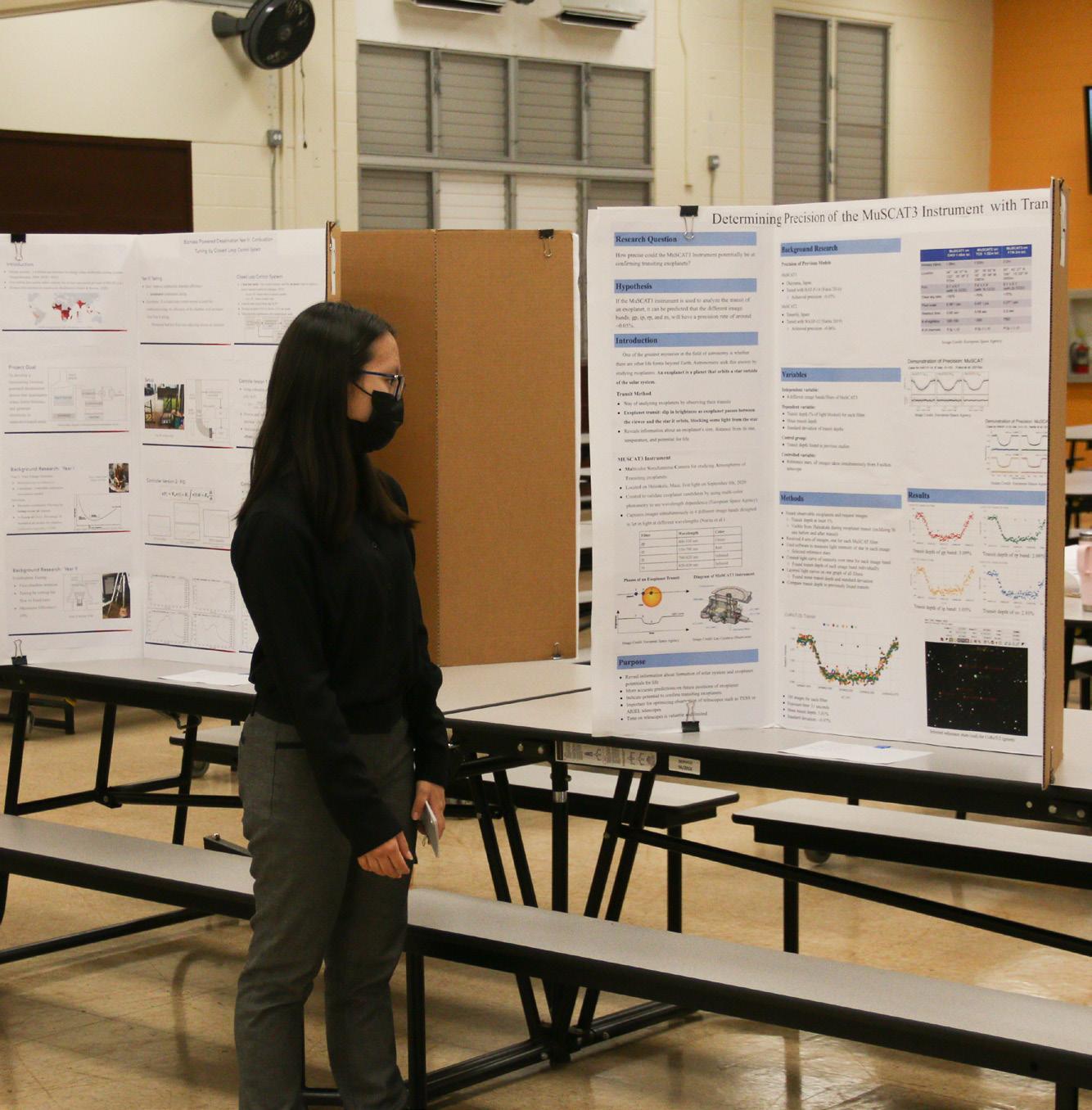
4 minute read
Science Fair: Exploring Possibilities
It’s human nature to be curious.
On Jan. 18, students got the opportunity to present their own self-directed, independent science projects at the Mililani High School Science Fair in the school’s cafeteria. The qualifying students then advanced to the Central District Fair which was held at Mililani Technological Park on Feb. 3. Some students participated out of interest, others participated because of classes such as AP Research or AP Biology, while the remainder competed in the Science Fair to gain the qualifications for the STEM Capstone diploma.
Advertisement
“I think so much of it is that once I have a question I need an answer. Sometimes you can’t find an answer so you need to make one,” said senior Lauren Gerber, one of the students to progress to the Hawai’i State Science Fair. “I think that the main reason I’m so interested in research is because I enjoy knowing things.”
The Mililani High School Science Fair had been strictly online due to COVID restrictions in years prior. This year saw the return of an in-person event with students using poster boards decorated with information to display their projects to the judges. For many, one of the biggest differences upon the return to in-person was the face-to-face communication it entailed. Students at this Science Fair would get 7 minutes to present their project with the rest of the allotted time being used for the judges to ask questions about the student’s process and research findings. In-person judging allowed for conversations to be held between both parties.
From School Fair to District Fair
The Central District Fair held MHS students as well as students from Waialua High School and Moanalua High School. Unlike the School Fair, the District Fair operated differently as the students presented on presentation slides instead of poster boards. The judges, which consisted of community science professionals, then took the time to walk around and oversee the projects in smaller groups of 3-4. There was a second part to the District Fair judging in which the judges called back certain students to individually present in front of the whole panel of judges. One or two students typically receive the opportunity to directly advance to the international level, while the rest who place at district level then move on to the State Fair against top contenders such as Kamehameha High School and Iolani High School.
“I think the key piece in science fair is not just the project and the experiment but the presentation,” said Science Fair judge Lani Arakaki. “To not just know your project so well to not just talk for days about it, but summing it up and making your point succinct and exact and precise for the judges to understand and to, you know, come up with questions and start a conversation.”
Real World Experience
The Science Fair provided an opportunity for students to mimic what professionals in STEM do in an academic setting by allowing them to choose their own topic and research question, provided that it fits safety regulations. Afterwards, they were to conduct their literature review by reading past studies related to their topic. From there, students designed their experiment and conducted research. Students then analyzed their data and created boards in order to present the research’s data while being able to discuss their project with a judge or peer, similar to a real-world setting. Holding Science Fair in-person also allowed students to see each other’s projects. Students could enjoy the social aspect of Science Fair by discussing with their peers about any shared experiences, as well as talk to each other about how their presentations went in between judging sessions.
“It’s not just judges’ feedback that means something, it’s peers as well. In the world of academia it really is about your peers,” said Science Fair coordinator and Science teacher John Sandvig. “It’s nice to have that social opportunity, you don’t get to do that very often and you get to talk to peers in an academic focused setting.”
Results and Triumphs
Out of the 12 spots offered at the Central District Fair to progress to the State Fair, MHS students attained 10 of those placements. There are 11 students overall that will attend the Hawai’i State Science Fair, as one of the projects qualified was headed by a duo. The State Fair will be held at the Exhibition Hall at the Blaisdell Center on Apr. 6th. All the other school districts will participate in the State Fair, including the private schools. However, there were 2 MHS students who received special honors to directly advance to the International Science and Engineering Fair because of their project’s quality. Both junior Cassidy Ibanez and junior Kenneth Yi had the chance to bypass the State Fair.
“What got me into research is that I realized I liked the process. I like starting off with an idea, reading up what other people are doing, gathering up that literature and building something,” said Ibanez. “Like you get to actually realize your ideas, and I think it’s really cool that you guide the process from start to finish.”
Ibanez’s project this year was a continuation from her freshman and sophomore year, where she won the Junior Science and Humanities Symposium at the state level last year for her project. This year her project in the District Fair won her the opportunity to go directly to the international competition. Her focus this year was to build a combustion chamber to burn biomass and tune the system to adjust the amount of airflow that went in it. This year’s experience taught Ibanez how to deal with the technical aspects of her project such as engineering and coding principles. Ibanez had done competitions such as Robotics and other STEM events in the past, but Science Fair allowed her to work on an independent research project.


“To have a student after one year or two years on a project is admirable so I’m always impressed with the quality that the students bring to their projects,” said judge and Office of Curriculum and Instructional Design program manager Anna Viggiano. “It’s not just an assignment for a class, it’s something they’re really interested in and it’s long term.”
Yi took a different approach to his project by experimenting with native Hawaiian plants in decontaminating the soil from heavy metals. His idea initially came from his interest in the Ala Wai Canal and wanting to clean its contaminated waters. The canal contains byproducts of industrialization such as heavy metals, pesticides, insecticides and all contaminants of canals and soil. Yi’s project seeks to answer the issue through environmentally healthy ways.
“I’ve just always liked science since I was a little kid. I’ve had an affinity for science. The concepts are tangible because it applies to the real world,” said Yi. “You can see how it affects the world unlike other subjects where you don’t see how it affects the world.”
In years to come, MHS hopes to raise more excitement for Science Fair and build it up to the level and attendance it was before the pandemic.
For those interested in participating next year, Mr. Sandvig can be reached in B112.










